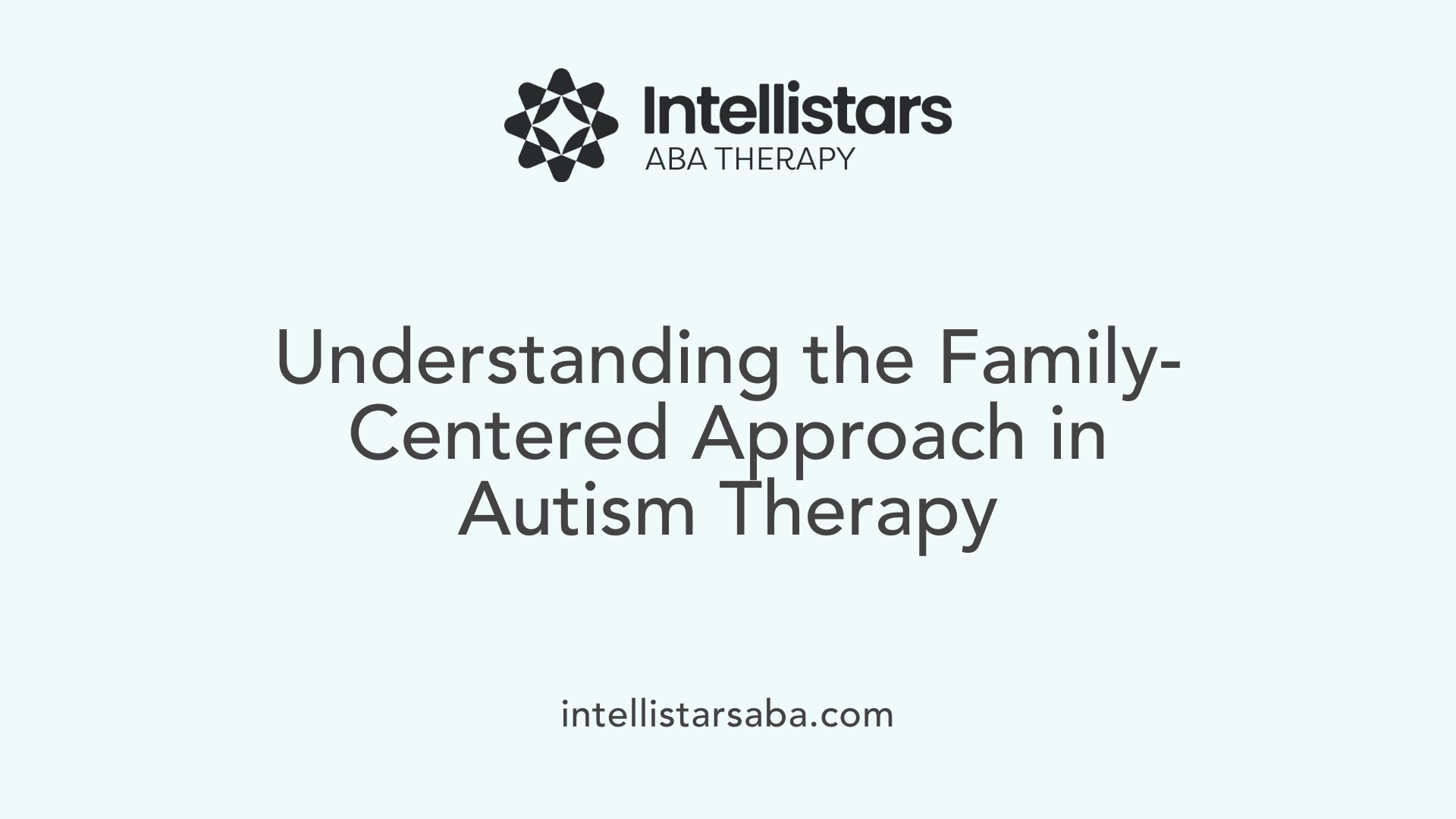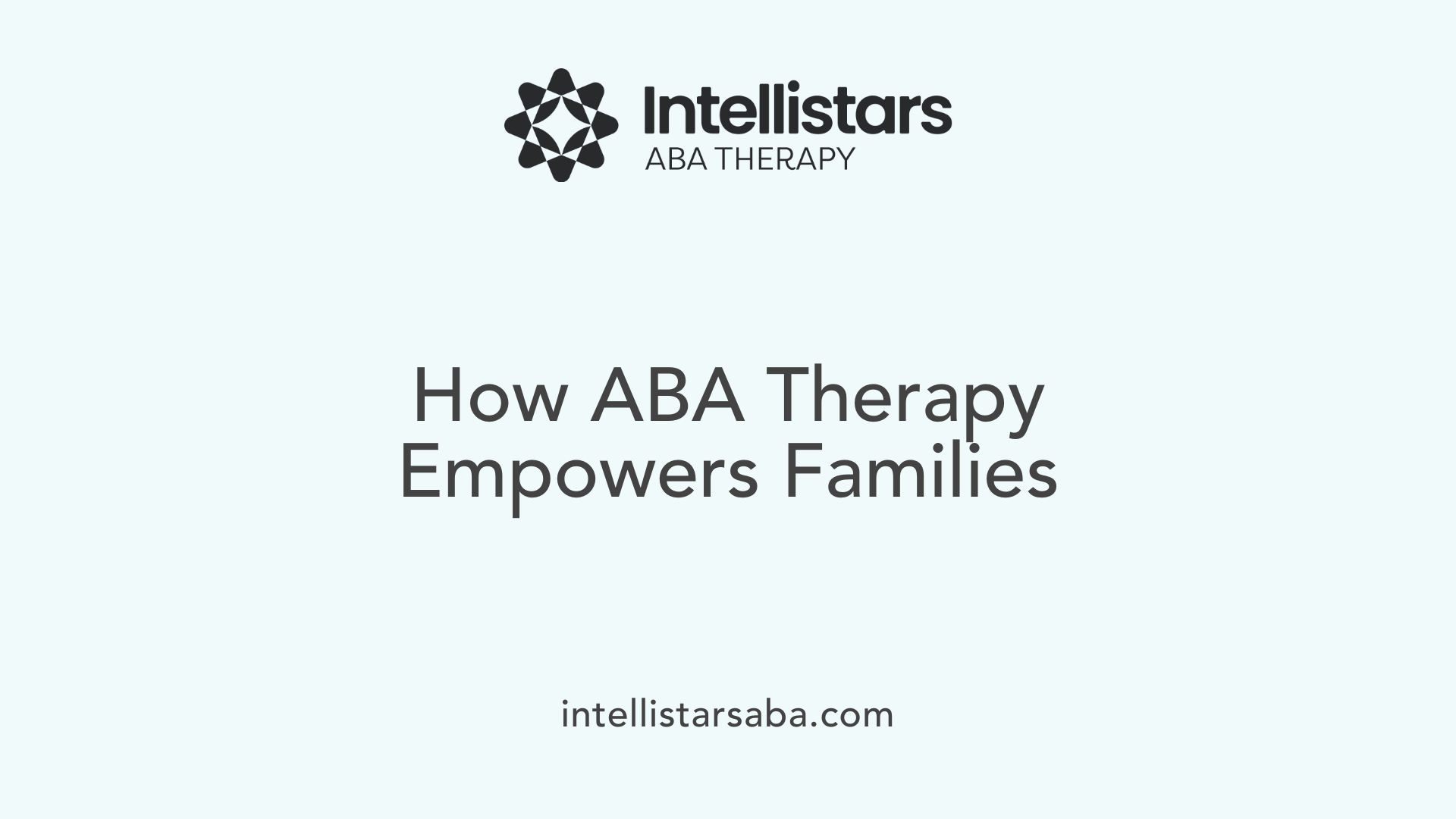Understanding the Family-Centered Approach in Autism Support
In the realm of autism intervention, a family-centered approach has gained prominence for its effectiveness and holistic benefits. This approach actively involves families as equal partners in planning, implementing, and evaluating therapeutic strategies, ensuring that interventions are tailored not just to the child's needs, but also to the family's unique circumstances. By fostering collaboration, respect, and empowerment, family-centered ABA therapy creates a supportive environment that enhances developmental outcomes and strengthens family bonds.
Defining the Family-Centered Approach in Autism Therapy

What is the family-centered approach in autism therapy?
The family-centered approach in autism therapy places families—especially parents and caregivers—at the heart of the intervention process. This strategy recognizes that children do best when their care involves active participation from those who know them best. It promotes collaboration between families and therapists, ensuring that treatment plans are personalized, respectful, and aligned with the family’s goals, strengths, and daily routines.
Core principles of this approach include empowering families through education and skill-building, maintaining open and respectful communication, and providing support that is adaptable to cultural and individual needs. This can involve everything from in-home strategies to community-based programs and the use of telehealth services, making intervention more accessible and consistent across different environments.
By fostering ongoing partnerships, the family-centered model aims to improve not only a child's developmental outcomes—such as communication, social skills, and adaptive behaviors—but also enhance overall family well-being. Its focus on shared decision-making and mutual respect helps create a supportive environment where families feel confident and involved throughout their child's developmental journey.
How ABA Therapy Reinforces Family-Centric Interventions

How does ABA therapy support family-centered interventions?
ABA therapy plays a crucial role in promoting active family participation in the treatment of children with autism. This approach recognizes that the involvement of parents and caregivers enhances the effectiveness of interventions and supports the child's progress across various domains, including communication, social skills, and emotional regulation.
One of the primary ways ABA supports family-centered care is through comprehensive training and supervision of parents and caregivers. Therapists work closely with families, providing them with the knowledge and skills needed to implement behavioral strategies consistently at home. This empowerment through education improves parents’ confidence and competence, making them active partners in their child's development.
The use of technology further strengthens family involvement by providing accessible tools for collaboration and progress monitoring. Web-based applications, treatment planning platforms, and mobile apps facilitate ongoing communication between families and therapists. These tools allow parents to track their child's progress, share feedback, and modify strategies as needed, ensuring that interventions remain tailored to the child's evolving needs.
Moreover, involving families in therapy sessions and planning fosters a cohesive, supportive environment. It encourages generalization of learned skills beyond the therapy setting, helping children apply new behaviors in everyday situations. Emotional support offered through active family participation also helps motivate children and reduces family stress, creating a positive feedback loop that enhances overall treatment outcomes.
In summary, ABA therapy integrates family involvement through targeted training, technological tools, and collaborative planning. This holistic approach leads to higher therapy adherence, better skill retention, and improved long-term outcomes for children with autism, emphasizing the importance of treating families as vital partners in the therapeutic process.
Enhancing Family Dynamics and Building Stronger Collaborations

How can ABA therapy enhance family dynamics and collaboration?
Family-centered ABA therapy plays a vital role in strengthening familial relationships through active involvement of parents and caregivers. By involving families in treatment planning, therapists can provide comprehensive training that equips parents with the knowledge and strategies needed to support their child's progress. Regular communication and collaborative goal-setting foster a shared understanding and unify efforts across home, school, and community environments.
Engaging families deeply promotes consistency, which is crucial for reinforcing positive behaviors learned during therapy sessions. When parents are empowered with skills, they gain confidence in managing behaviors, making them active partners rather than passive observers. This collaboration nurtures trust, respects cultural values, and creates a supportive atmosphere conducive to growth.
Open dialogue between therapists and families helps tailor interventions to meet individual needs, ensuring cultural sensitivity and relevance. Active family participation also accelerates skill generalization outside clinical settings, leading to more meaningful progress.
In sum, family-centered ABA therapy emphasizes partnership, shared goals, and open communication, ultimately fostering nurturing relationships and more effective support systems. This approach not only enhances the child's development but also builds stronger, more cohesive family units.
The Benefits of Family Engagement in Child Development
Involving families in ABA therapy provides a multitude of positive impacts on a child's development, especially in areas like communication, social skills, and behavior. When parents actively participate, children often see quicker and more consistent progress because skills learned in therapy are reinforced at home and in community settings. This joint effort helps children generalize their new skills across different environments, making their learning more meaningful.
Moreover, engaging parents in the therapeutic process boosts their confidence and understanding of autism and ABA strategies. This increased knowledge empowers families, enabling them to manage behaviors more effectively and advocate for their child's needs. When parents are involved, they gain practical skills and insights, which help create a supportive, stable environment where children feel secure and motivated.
Family participation also strengthens emotional bonds, fostering better relationships and shared experiences. This emotional support can make children more receptive to therapy and social interactions. Additionally, parents who are involved can track progress closely, providing valuable feedback that helps tailor interventions to meet the child's evolving needs.
Research shows that when families are engaged, children tend to improve in social interactions, communication, and adaptive behaviors more than with passive observation. This collaborative approach ensures that therapy is more effective and sustainable, leading to better overall developmental outcomes.
| Benefit | How It Helps | Additional Notes |
|---|---|---|
| Improved communication and social skills | Consistent practice and reinforcement across environments | Leads to better integration in social settings |
| Skill generalization | Reinforcing learned behaviors outside therapy | Results in more adaptable and independent children |
| Parental empowerment | Increased confidence and knowledge | Parents become active participants and advocates |
| Emotional bonds and family cohesion | Shared experiences and understanding | Promotes a supportive family environment |
| Better progress tracking and feedback | Tailored interventions | Ensures therapy stays person-centered and effective |
Implementing best practices such as regular parent training, open communication, collaborative goal-setting, and community involvement further enhances these benefits. Overall, family-centered ABA therapy creates a nurturing environment that supports a child's growth and well-being, making it a cornerstone of effective autism intervention.
Building Trust and Strong Relationships with Families

What practices should ABA professionals adopt to build strong relationships with families?
ABA professionals should focus on creating a foundation of trust and mutual respect with families from the very beginning. This involves engaging in respectful and genuine interactions, which help foster rapport and confidence. Initiating therapy with positive experiences and open dialogue encourages families to feel valued and included.
Effective communication is vital. Active listening—truly understanding families' concerns, needs, and perspectives—supports shared decision-making. Collaborating with families during goal-setting ensures that therapy targets are aligned with the child's daily life and family priorities.
Providing ongoing education about ABA strategies empowers parents and caregivers, enabling them to confidently implement techniques at home. Supporting their efforts with practical advice, resources, and encouragement helps reinforce learned behaviors and promotes consistency across environments.
Tailoring interventions to fit individual family circumstances, including cultural backgrounds and the dynamics of siblings or other family members, demonstrates respect for diverse values and strengthens the partnership.
Continuous, transparent communication is essential. Regular updates on progress, challenges, and next steps build trust and allow for adjustments as needed. Showing empathy, being receptive to feedback, and demonstrating genuine interest in the family's well-being fosters a collaborative atmosphere.
Finally, maintaining cultural sensitivity and personalizing support shows respect for each family's unique context, ensuring they feel heard and respected. This comprehensive approach helps develop a solid, trusting relationship between ABA providers and families, ultimately supporting the child's growth and success.
Supporting Families and Caregivers with Ongoing Resources

How does stress management and caregiver well-being impact family-centered ABA?
Family-centered ABA recognizes the importance of supporting not just the child but also the family caregivers. Managing stress and promoting caregiver well-being are crucial because high stress levels can hinder the implementation of therapy strategies and affect overall family dynamics.
To address this, programs increasingly include resources such as support groups, counseling, and stress reduction techniques. Providing emotional support helps reduce caregiver burnout, fostering a more positive environment for the child's development.
What accessible training and educational resources are available?
Various formats are utilized to ensure families can access necessary training and education. Parent training workshops, online courses, and resource libraries give caregivers the tools they need to understand ABA principles and apply strategies consistently.
Programs like Project ImPACT and JASPER offer structured guidance on enhancing social communication and understanding behavioral cues, allowing families to reinforce learning across different settings. These resources empower caregivers by increasing their confidence and competence.
How does technology facilitate ongoing support?
Technology plays a pivotal role in delivering continuous assistance. Telehealth models have expanded access to caregiver-mediated interventions, especially for families in remote or underserved areas.
Digital platforms enable virtual coaching, real-time feedback, and flexible scheduling, making ongoing support more manageable. Innovations such as mobile apps and online communication tools allow caregivers to track progress, maintain engagement, and receive timely guidance.
What evidence supports the effectiveness of family-centered ABA approaches?
Research consistently demonstrates that involving families enhances communication, social skills, and adaptive behaviors in children with ASD. Studies show that programs incorporating caregiver training and active participation, including naturalistic developmental behavioral interventions (NDBIs) like the Early Start Denver Model, lead to better generalization of skills across environments.
For example, caregiver coaching has been linked to increased social engagement, responsiveness, and reduced challenging behaviors. Systematic reviews reveal that family-centered initiatives foster empowerment, higher satisfaction, and improved outcomes overall.
In summary, integrating stress management, accessible resources, and technology forms a comprehensive support system. This approach not only optimizes child development but also strengthens family resilience and ensures sustainable intervention efforts.
Fostering Long-Term Success and Family Well-Being
The integration of ABA therapy within a family-centered framework represents a pivotal advancement in autism support, emphasizing collaboration, empowerment, and personalized care. With ongoing training, open communication, and technological tools, families are better equipped to navigate the challenges of autism, apply effective strategies, and celebrate developmental progress. This holistic approach enhances not only the child's growth but also strengthens familial relationships, reduces stress, and fosters resilience. Ultimately, family-centered ABA interventions hold the promise of transforming lives by creating supportive environments that nurture long-term success, independence, and well-being for individuals with autism and their families.
References
- ABA Therapy in Center: How Involving Parents Makes a Difference
- The Importance of Family-Centered Care: Enhancing Autism ...
- The Role of Family in ABA Therapy: Tips for Parents
- Advances in Supporting Parents in Interventions for Autism ...
- Family-Centered Interventions for Children on the Autism Spectrum ...
- Family-Centric Applied Behavior Analysis Promotes Sustained ...
- The Role of Family in ABA Therapy: Tips for Parents
- Family-Centric Applied Behavior Analysis Facilitates Improved ...
- Impact of ABA Therapy: The Key Role of Parental Involvement






